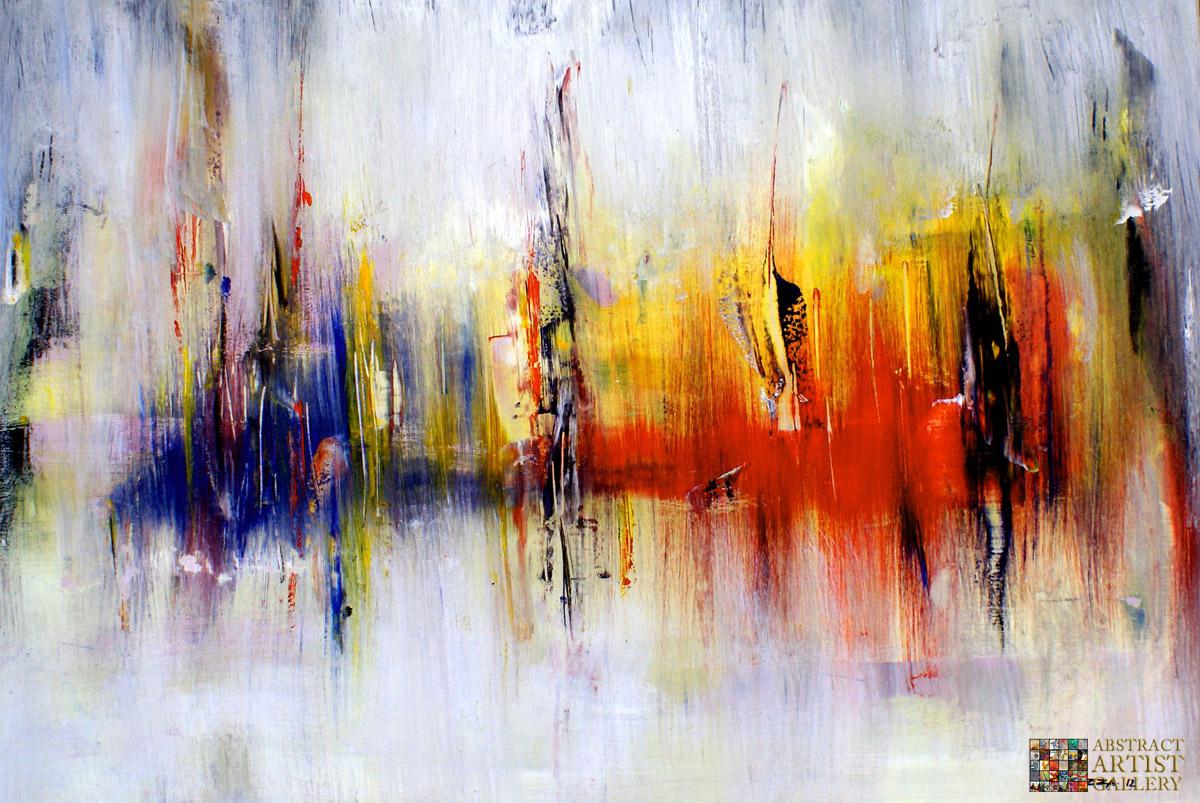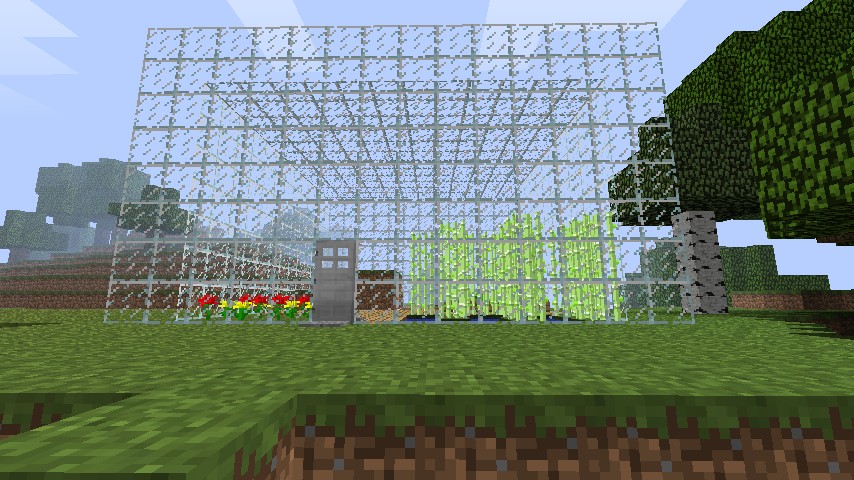Table Of Content

This vibrant, abstract artwork entitled 'Ride the Stars Tonight' was produced by graphic and interactive designer Peter Balkov. Specialising in web and advertising, Balkov makes use of vivid, striking colours in this personal project. Abstract art’s main purpose is to spark the imagination and invoke a personal emotional experience. The best abstract art can create a different experience depending on one’s personality or mood.
Chance and Intention: Gerhard Richter’s Abstractions
Here, the artist's thin layers of color seem to have a life of their own as a result of the feathered and layered brushwork, resulting in a sense of pulsating movement. His intention with works such as these was to call up associations with primal human emotion. As a result, he had specific instructions for his paintings to be mounted in order to have the horizontal line between the rectangles come close to the viewer's height as well as dim lighting, resulting in a feeling of being enveloped by the paintings. Art historian James Breslin notes that his works, "seem to locate a viewer at a 'doorway' between the physical and transcendent worlds" and that they "provide a public stage on which the human and the transcendent can be rejoined". In keeping with this extreme form of abstraction, Rothko chose to title his works with numbers in order to eliminate any possibility of association.
Early 20th century
At age 18, Kepes enrolled at the Royal Academy of Fine Arts in Budapest, where he studied for four years with Istvan Csok, a Hungarian Impressionist painter. One of the best at doing this in the artistic world was Rene Magritte, a Belgian man who was known to put strange shapes and objects in peculiar sizes with men in suits or naked bodies. This is also why typical tattoos such as dagger tattoos are personalized with other images or include names, initials, and dates. It is the personal tattoo that most people search for – and they find it in abstract tattoos. Lots of people considering a new tattoo look to abstract rt for inspiration and ideas.
Best AI Art Generators: Our 9 Pro Picks For 2024 - eWeek
Best AI Art Generators: Our 9 Pro Picks For 2024.
Posted: Tue, 27 Feb 2024 08:00:00 GMT [source]
Objective abstraction
Other artists such as Morris Louis and Jules Olitski used this in their own more decorative abstract paintings. He began to pour and drip paint onto unmounted, unprimed canvas on the floor, often stepping into the painting during the process. He created entirely nonobjective paintings in which the only sense of illusion lay in drips of paint lying on top of one another. Willem de Kooning, was also an Action Painter, working in an abstract fashion while utilizing recognizable imagery, as in his Women series.
While it exists today in many forms, both two and three-dimensionally, abstract art disrupted the art world when it abandoned realistic representation of subject matter. We’ll explore the characteristics, styles, and examples of abstract art that still influence artists today. The raw language of color as developed by the Fauves directly influenced another pioneer of abstraction, Wassily Kandinsky.

Golden Invisible French Nails
New subject matter became available and artists started experimenting with shapes and form. Artist Constantin Majrowski spent a number of years studying the work of 17th and 18th century painters, exploring colour, form and light, before creating his own abstract works using oil on canvas. Painting professionally for more than 27 years now, Majrowski's work has been exhibited in private collections across Europe and the US. Art Informel is often viewed as the European equivalent to Abstract Expressionism and arose in a similar time period.
Commentary: The Broad expansion makes the museum more flexible, but at what cost?
Only mythological and historical subjects as well as landscapes were deemed widely acceptable and realism in their portrayal was paramount. These two factors encouraged artists to rebel against traditional artistic depictions by seeking new subjects and styles and to experiment with what paint could do that photography could not. However, the first modern artist to create artwork with non-representational forms was Wassily Kandinsky who in 1910 broke away from the traditions of figurative art to produce his first untitled abstract watercolor. He was inspired by a Monet painting of haystacks, where he realized that color and form could be powerful on their own and the object of the painting did not need to be clear or even present. Many of the abstract artists in Russia became Constructivists believing that art was no longer something remote, but life itself.
Coral and Lichen, Brains and Bowels: Jay DeFeo’s Hybrid Abstraction
Even art that aims for verisimilitude of the highest degree can be said to be abstract, at least theoretically, since perfect representation is impossible. Artwork which takes liberties, e.g. altering color or form in ways that are conspicuous, can be said to be partially abstract. In geometric abstraction, for instance, one is unlikely to find references to naturalistic entities.
t century
In fact, even though Kenneth Noland had been a student of Josef Albers, who famously espoused the "interaction of color," he and others like him often tended to employ colors that failed to relate in the way Albers envisaged. Frederick Hammersley's Opposing #15 (1959) is typical of this strategy, since it uses contrasting primaries. Instead of high-powered and modern tattoo machines, the intricate and busy designs are made using a wooden handle, metal needle, and silk. These creative art tattoos can be the most unique and personal ever – so do your research before finalizing your design and heading to the local tattoo studio.
Their paintings and sculptures sought to expand the creative potential of the mind, by juxtaposing images together that appeared irrational and unconventional. For designers today, abstract art is a term that encompasses a huge range of different styles and artistic approaches. Generally, however, all aspire to represent creativity, visuality, and artistic expression in a non-realist way. Read on to learn more about different types of abstract art — from cubism to surrealism, marbling to abstract organic — and which styles are being reinterpreted for contemporary design, as well as how you can use abstract images in your own designs.
These abstract nails are truly perfectly imperfect, with raw lines that nod to the mani trend in a modern way. Although these are technically classic white French tips, the heart-shaped cutouts and chromatic details make this set anything but basic. Try painting on some hot pink hibiscus blooms for a mani moment that will have you dreaming of sunny beach days.
Video below of a 1988 interview in Cambridge on the occasion of a California Polytechnic show on art and science. The interview explores the role of art in transforming one’s inner self, a process that leads to art transforming the outer world, as well. In 1930, Kepes settled in Berlin, where he worked as a publication, exhibition, and stage designer. Around this time, he designed the dust jacket for Gestalt psychologist Rudolf Amheim’s famous book, Film als Kunst (Film as Art), one of the first published books on film theory. In Berlin, he was also invited to join the design studio of Laszlo Moholy-Nagy, the Hungarian photographer who had taught at the Dessau Bauhas.
It was an umbrella term for a variety of movements that emphasized intuition over rationality in the hopes of creating universally accessible art. Named for the French word tache, meaning "stain" or "spot", the movement was characterized by a gestural, intuitive application of paint, featuring large brushstrokes, drips, and splashes of color. Like Dada, while Surrealism was not an entirely abstract movement, many of its practitioners made steps that resulted in significant advances in abstraction. The movement was originally literary, and their engagement with automatic writing, intended to facilitate access to the unconscious, spread into the visual arts in a variety of techniques. Surrealists also incorporated Dada's interest in new media and chance into the pseudo-abstract techniques, decalcomania and grattage.
Early abstract artists working during the late 19th and early 20th centuries used color, form, shape, and line to create paintings, sculptures, and drawings that purposefully felt independent from identifiable objects, landscapes, and people. Abstraction gave artists a new level of freedom to experiment with artistic methods and allowed these artists to reshape the traditional meaning of what “art” was. Employing imagery reminiscent of sails and materials evocative of transatlantic voyages, such as canvas and ropes, Ernesto Neto (find more here) crafts a series of installations encompassing the various dimensions of the space at MAAT (find more here). Primarily utilizing chintz, a cost-effective cotton fabric prevalent in Brazil and often adorned with vibrant floral motifs, Neto intricately cuts and crochets the material’s strips with various collaborators’ assistance. This technique, honed over years in the artist’s studio in Rio de Janeiro known as atelienave, forms the basis of the sculpture, composed of interconnected cells. Guided by a freehand approach, the overall design of the work evolves through experimentation and adjustments facilitated by specialized software, ensuring both precision and adaptability to the unique characteristics of the space during installation.

No comments:
Post a Comment